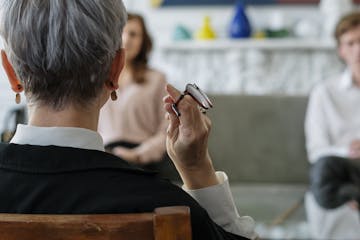The relationship between education and creativity has been a topic of debate for decades. The traditional education system has frequently been criticized for its alleged tendency to restrict student creativity rather than foster it. Sir Ken Robinson's famous TED talk titled "Do schools kill creativity?" shed light on this important issue, sparking intense debate in the education community and beyond.
The Importance of Creativity in Education
Creativity is a fundamental skill that allows people to think originally, solve problems innovatively, and express their ideas in unique ways . In an ever-changing world, the ability to be creative has become increasingly valuable in all areas of life. In education, creativity is not only useful for the arts and humanities, but also plays a crucial role in learning science, mathematics, and other disciplines.
Experts in psychology and Education agree that fostering creativity in the classroom is essential to prepare students for the challenges of the 21st century. The ability to think creatively not only drives innovation and progress, but also promotes self-expression, self-confidence, and self-efficacy in students. Therefore, it is essential that schools provide opportunities for students to develop and exercise their creativity rather than stifling it.
The Conflict Between Traditional Education and Creativity
Despite Of the undeniable benefits of fostering creativity in the classroom, many critics argue that the traditional education system is designed in a way that discourages originality and imagination in students. From an early age, children are exposed to an educational approach based on memorization, repetition and conformity, which prioritizes academic success at the expense of creativity.
In schools, students are often evaluated students based on their ability to regurgitate information on standardized tests, follow specific instructions, and adhere to a predetermined curriculum. This restricted focus not only limits students' freedom to explore new ideas and approaches, but can also undermine their intrinsic motivation to learn and discover for themselves.
The Role of Teachers in Promoting Creativity
Teachers play a crucial role in promoting creativity in the classroom. By creating an educational environment that encourages experimentation, curiosity, and critical thinking, teachers can inspire their students to develop their creativity and think innovatively. Instead of focusing exclusively on the transmission of knowledge, teachers should cultivate a learning environment that celebrates the diversity of ideas and perspectives.
In addition, teachers can foster creativity by encouraging their students to take risks. , to question established norms and look for original solutions to problems. By providing opportunities for collaboration, autonomy, and experimentation, teachers can help students develop creative skills that will be valuable throughout their lives.
Exploring New Perspectives in Education
As society evolves and faces new challenges, it is essential to rethink the way we teach and learn in schools. Instead of perpetuating an educational system that privileges memorization over creativity, it is necessary to adopt pedagogical approaches that encourage originality, innovation and autonomy in students.
The Importance of Personalized Education
One of the most common criticisms of the traditional education system is its "one size fits all" approach that does not take into account the individual differences of students. Personalized education is a pedagogical approach that focuses on the unique needs, interests, and abilities of each student, recognizing that not everyone learns in the same way or at the same pace.
By personalizing instruction, teachers They can adapt their pedagogical approach to each student's strengths and weaknesses, providing a space for them to develop their creativity and explore their interests. This approach not only encourages meaningful learning, but also empowers students to take ownership of their educational process and become autonomous and creative learners.
The Integration of Technology in the Classroom
Technology has revolutionized the way we live, work and learn. In the educational field, the integration of technology in the classroom opens new possibilities to encourage creativity and innovation in students. From creating multimedia content to programming robots, technology offers powerful tools for students to explore their creativity in ways previously unimaginable.
Teachers can use technology as a platform to foster collaboration, experimentation and critical thinking in the classroom. By integrating digital tools into their teaching activities, teachers can offer students opportunities to create, design and solve problems creatively, preparing them for a future driven by innovation and creativity.
Key Takeaways
In conclusion, although the relationship between school and creativity has been the subject of debate for a long time, it is essential to recognize the crucial role that creativity plays in learning and in the comprehensive development of students. To cultivate creativity in the classroom, it is necessary to rethink the way we teach and learn, adopting pedagogical approaches that encourage originality, innovation and autonomy in students.
Teachers play a role instrumental in promoting creativity in the classroom, creating an educational environment that celebrates diversity of ideas and perspectives, encourages experimentation and critical thinking, and provides opportunities for collaboration and autonomy. By adopting innovative, student-centered pedagogical approaches, schools can foster a culture of creativity and active learning that prepares students to meet the challenges of the 21st century with confidence and resilience.


